8 essential lawn care tasks – for perfect turf in your yard
Get the best lawn on the block by adding these key jobs to your maintenance routine

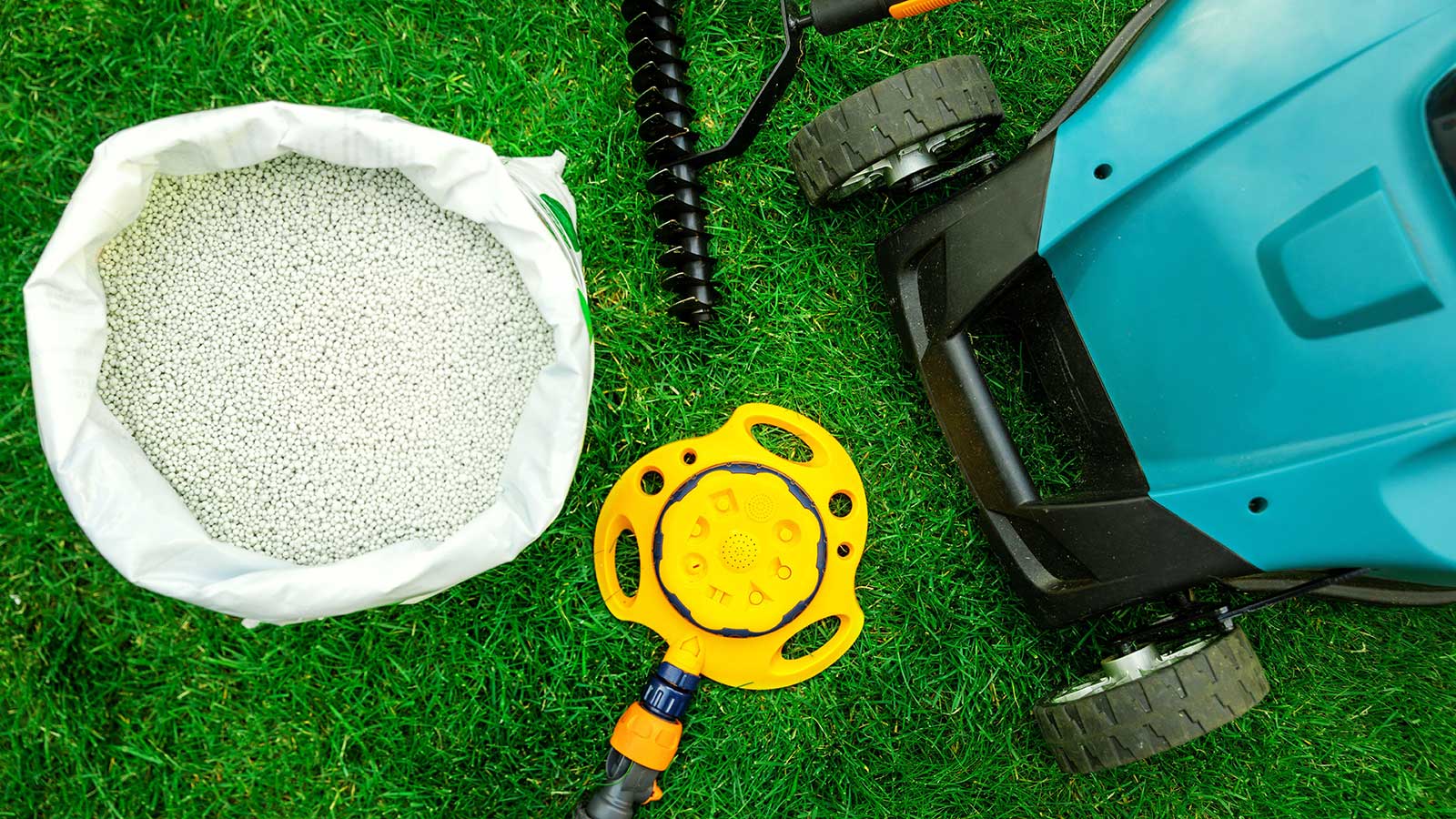
For a picture-perfect lawn, you need a stellar lawn care routine. And if you're relatively new to gardening, or lawn care in particular, it can be tricky to know where to start.
You may have heard words such as 'dethatching' and 'aerating', thrown around – but what do they actually mean? And are they essential for top-tier turf?
The answer is, yes; and there are other must-do jobs to add to your list, too. It's undeniable that good turf takes work, but with these expert tips, you'll be well on your way to a thick and green lawn.
8 lawn care tasks to add to your maintenance routine
Get the turf in your plot looking its best with these jobs.
1. Mowing
'Proper mowing practices, such as mowing at the correct height and frequency, can help encourage healthy growth and prevent disease,' says Gene Caballero, the Co-Founder of GreenPal. He advises weekly mowing in the spring and summer months and bi-weekly in the fall and winter if necessary. Never remove more than a third of the length at one time, and avoid mowing wet grass: doing so is a common lawn care mistake.
It's important to keep the blades on your best lawn mower sharp, adds Eric DeBoer of Simple Lawn Solutions. 'Sharp mower blades make clean cuts on your grass blades. These clean cuts heal quickly and result in less water loss from the leaf tissue. Dull mower blades result in jagged, slow-to-heal cuts that can give your lawn an undesirable brown tinge on the tops of the leaf surface.'

Gene Caballero is the Co-Founder of GreenPal which has been described as Uber for lawn care. He has been in the landscaping business for over 25 years.
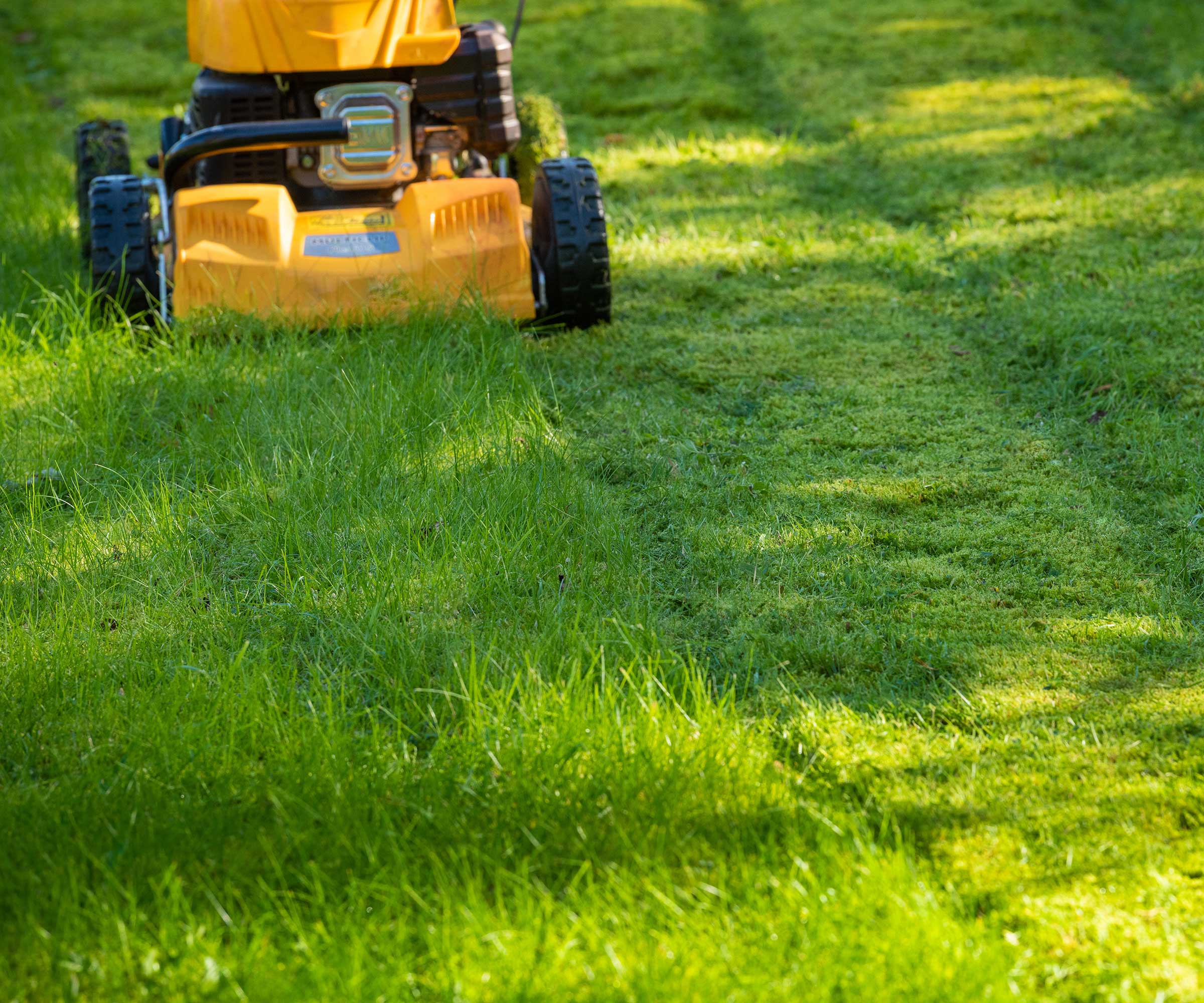
Mow your lawn to keep it in check
2. Weeding
'Weeds should be removed as soon as they appear, as they can quickly spread and take over the lawn,' says Gene.
Design expertise in your inbox – from inspiring decorating ideas and beautiful celebrity homes to practical gardening advice and shopping round-ups.
There are multiple ways to kill weeds but not grass: these range from digging them up by hand to using specific lawn weed killers. For pristine turf with an even appearance, keep an eye out for moss in lawns, too – although some gardeners don't mind this soft and velvety interloper that often takes over in shadier spots. It does look better than bare patches, after all.
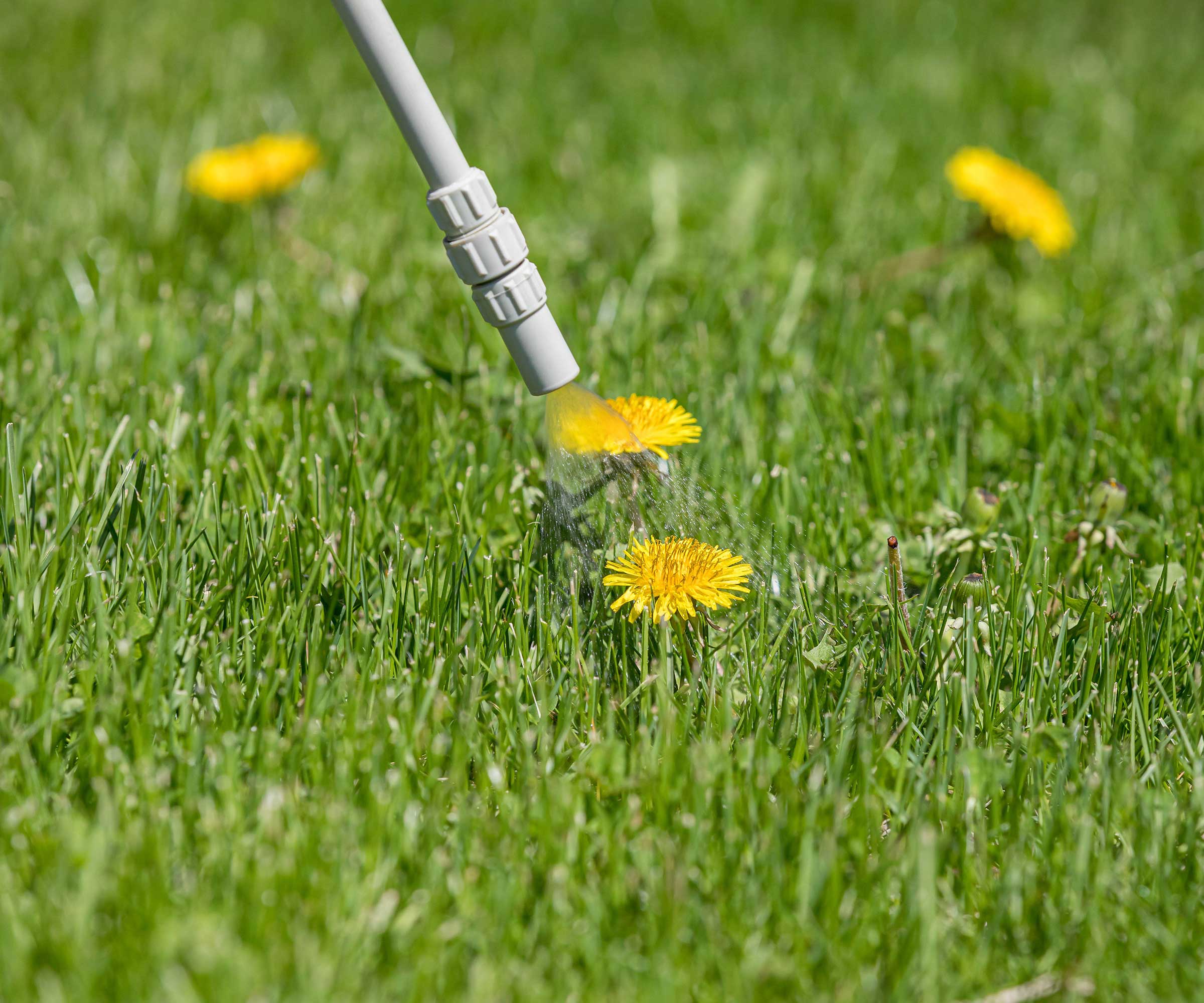
Weeds can be treated with a lawn herbicide that won't damage the surrounding grass
3. Fertilizing
'Fertilizing your lawn can help provide essential nutrients that may be lacking in the soil, promoting healthy growth,' says Gene.
Eric DeBoer of Simple Lawn Solutions says as little as two applications per year can make a big difference. 'One application of fertilizer when your grass begins its period of active growth and another round later in the season can help thicken up your lawn.'
Be mindful that it's possible to have too much of a good thing, though: over-fertilizing a lawn can do more harm than good. 'Be careful never to apply more than 1lb of nitrogen per 1000 square feet at any one fertilizing event,' Eric advises.
4. Watering
'Consistent and deep watering is essential for maintaining a healthy lawn,' says Gene. 'During the hot summer months, it is important to water your lawn deeply and less frequently, to encourage the roots to grow deeper into the soil. In the cooler months, you can reduce the frequency of watering.'
In terms of when to water your lawn, Gene shares his advice: 'It is best to water early in the morning or late in the evening when the temperature is cooler, to avoid evaporation and ensure that the water reaches the roots.'
Many gardeners choose to water their lawns using sprinklers. Kody Ketterling, the Founder and President of K-IT lawn maintenance products, highlights the importance of checking them over before turning them back on for the warmer months.
'Sprinkler heads need to be raised and free from dirt and debris to work efficiently. When a sprinkler is not above the grass blade height, even the most advanced water-saving nozzles distribute water inefficiently. Blockage of the water stream causes increased water waste and runoff.'
If you are trying to get grass to grow under trees, it is particularly important to keep on top of watering.
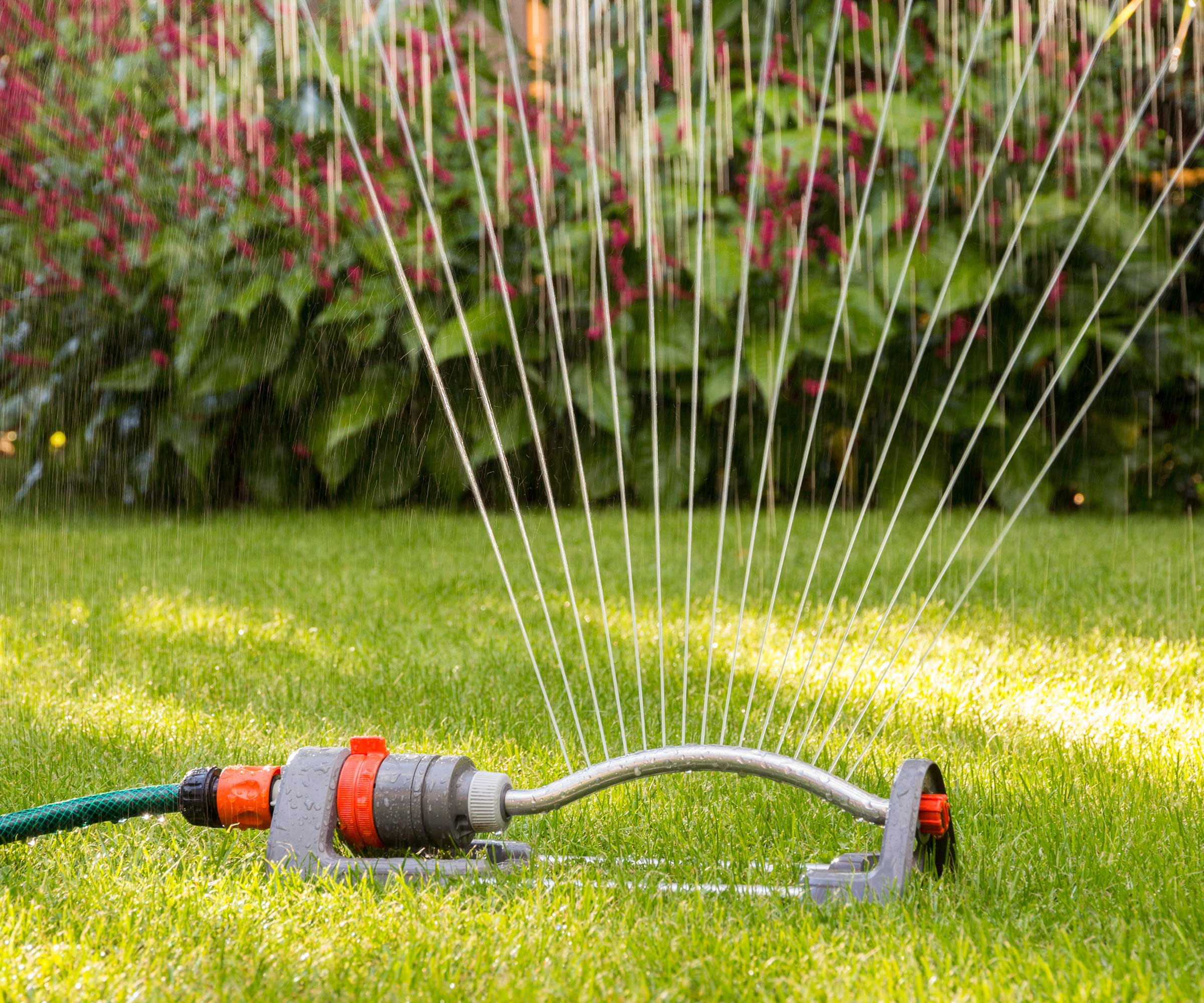
Check your sprinklers are working correctly
5. Clearing debris
'Clearing debris is one of the most important year-round maintenance tasks people need to do,' says Jeremy Yamaguchi, the CEO of Lawn Love. 'Not only does it keep your lawn looking neat and tidy, but it keeps it healthier as well.
'Grass needs oxygen and sunlight to thrive, so when it is constantly covered by leaves and pine needles, it can start turning yellow and die. And when moisture is added to these scenarios, it can contribute to the growth of mold or bacteria.
'Since clearing debris from your yard can be a timely and tiring ordeal when only done from time to time, I always recommend doing it more frequently so that there is less work to do and it's easier to maintain,' Jeremy adds. If it's fallen leaves you're collecting, why not put them to good use by creating leaf mold?

As the CEO of Lawn Love, Jeremy Yamaguchi helps homeowners find quality, reliable lawn care. Specializing in technology and using industry experience, he intends to revolutionize the lawn care industry.
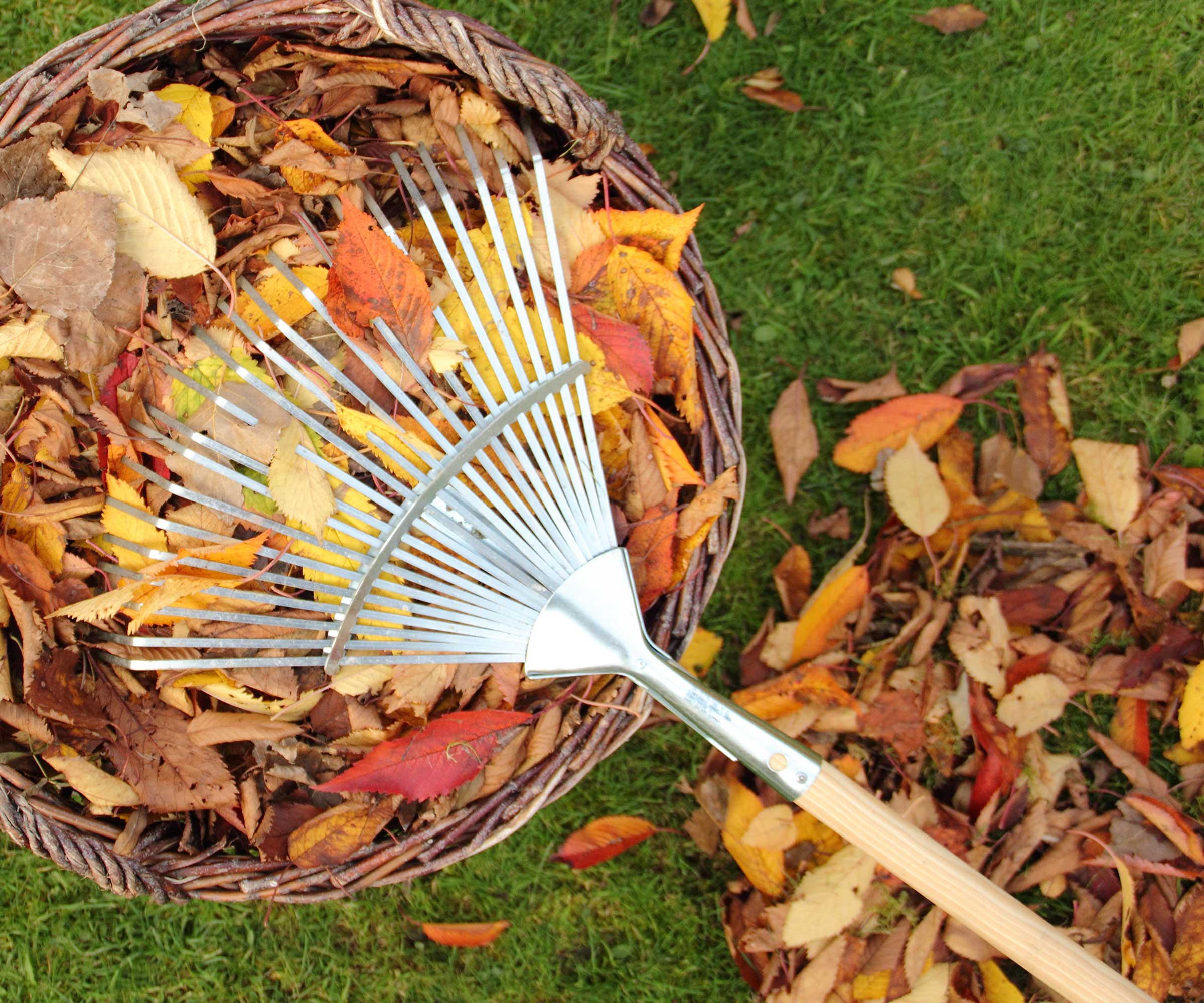
Leaf mold is a valuable material in the garden
6. Aerating
'Lawn aeration is an essential process that involves creating small holes in the soil to allow air, water, and nutrients to reach the roots of your grass,' explains Richa Kedia, a Gardening Expert from Nursery Lady.
It's a particularly good idea to aerate before overseeding a lawn, or before fertilizing it. There are various tools available for the job, from manual aerators such as this Gardzen one from Amazon, to wearable shoe aerators and mechanical designs: great for larger plots.
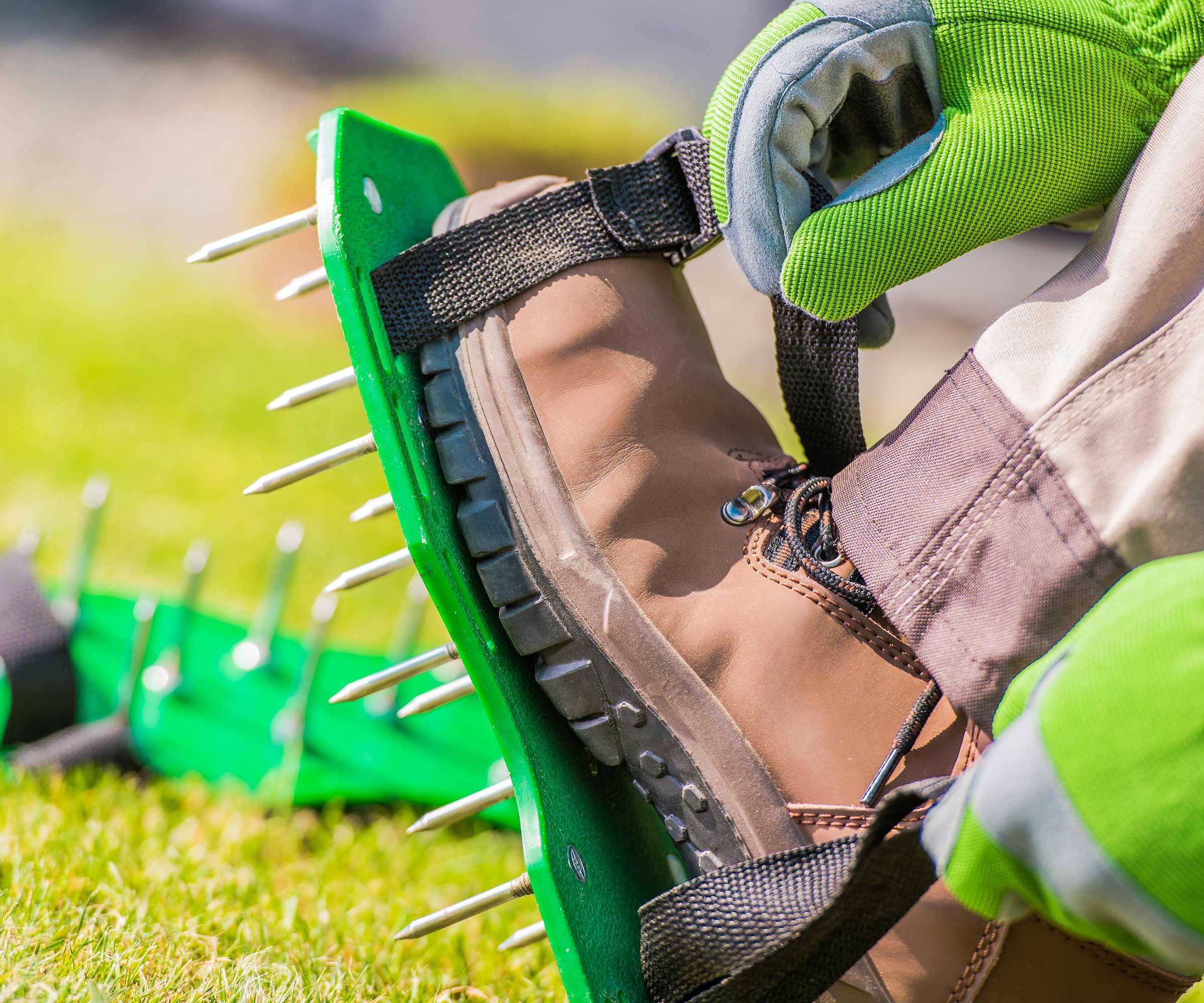
Aerator shoes make lighter work of this lawn care task
7. Pest control
'Pests such as ticks, grubs, and chinch bugs can cause significant damage to your lawn if left unchecked,' warns Richa Kedia. 'Look for any signs of infestation and proactively apply natural pest control treatments.'
Applying lawn grub control at the right time can also be very effective.
Watch out for moles, too – there are humane ways to deter them from making hills on your grass.
8. Dethatching
Dethatching a lawn removes a build-up of dead grass and moss, in turn improving airflow and enabling more water and fertilizer to penetrate down to the roots. You can do this manually, using a spring-tine rake.
The best time to do this is when the lawn is actively growing: generally in early spring and in the fall.
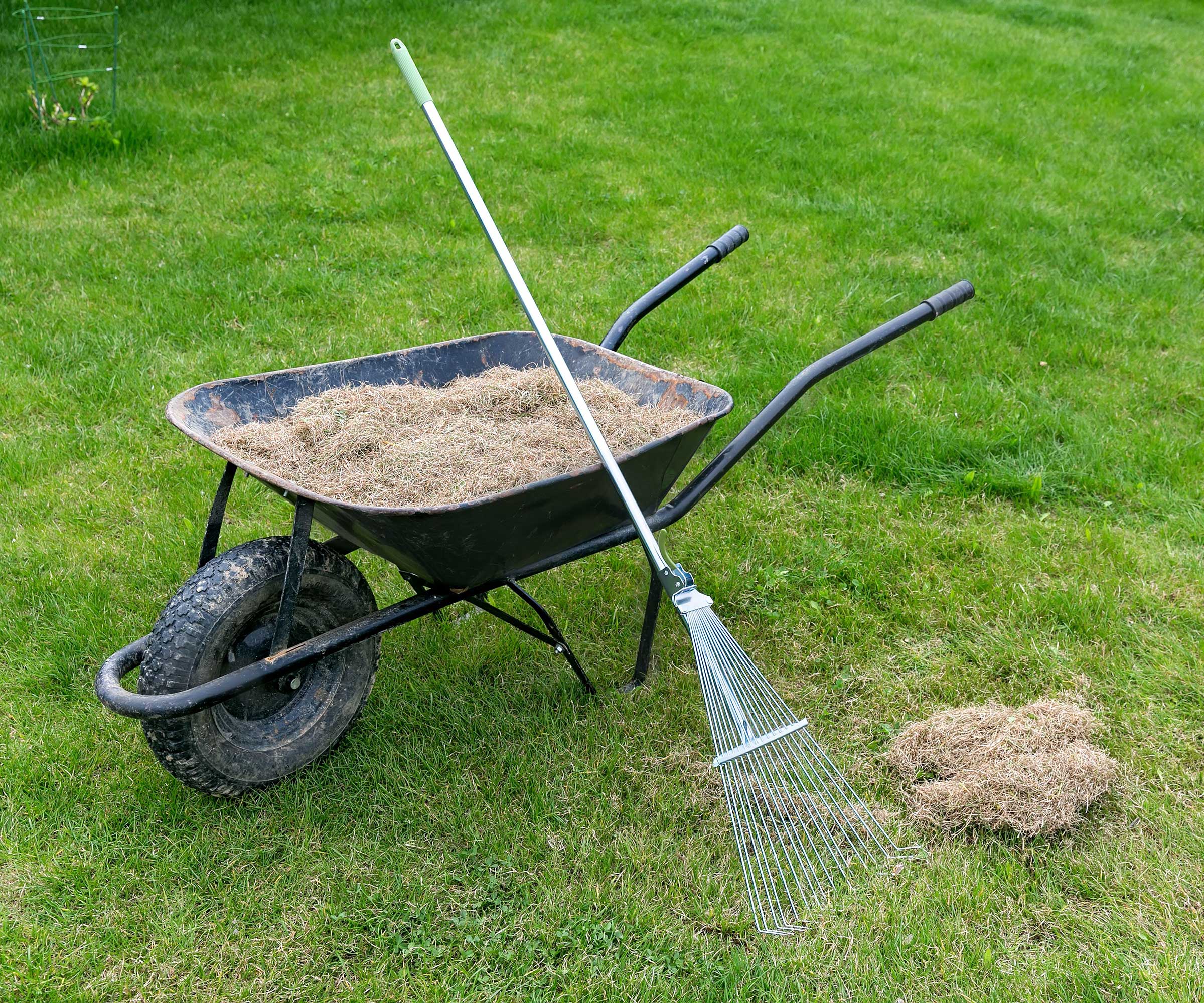
Remove the build-up of thatch from your grass
As you can see, taking on a lawn does require some maintenance, but when done correctly, the results will be well worth it. And of course, if it feels like too much trouble, there are plenty of gorgeous no-grass backyard ideas to consider instead.

Holly started writing about gardening five years ago, and she is a regular contributor to Homes & Gardens. She has also written many gardening features for Woman & Home and Real Homes, too. She has previous experience as a professional gardener, where she helped to plant and maintain private gardens. Holly has also looked after allotment plots over the years and loves to grow her own flowers and veggies from seed. In her spare time, she enjoys visiting local gardens, botanical drawing, and tending to her ever-growing collection of houseplants.